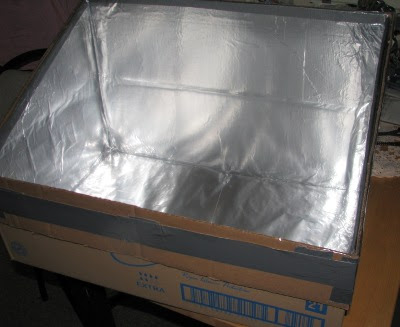Today I was browsing ebay looking at wind turbine stuff. I came across this link here. Here is an excerpt:Wind Turbine 1000 watt. Complete system minus inverter and battery
This is the Best of the Best. Made in Michigan. Made in the U.S.A.
This high out put 1000 watt Wind Turbine is the best out there to start with;
The frame is made of 6061 aluminum aprox 52 inches long strong yet light. bolted together with stainless steel washers nuts and bolts. This unique designed lets you install the wires down the center of the tube so the wires wont get tangled up.This is truly a work of art.
Dont buy a frame thats made out of cheap steel from china then welded by a amatuer and painted over, the frame will rust crack paint will chip off and will look terrible in weeks
This heavy duty motor/generator can produce a 1000 watts as a wind generator. The wind generator is rated for 130 volts dc 8 amps and reversible (creates electricity spinning in either directions they have thick magnets and brushes inside the housing. The outside housing is painted with white epoxy paint.The motor hits about 12 volts at 12 mph start up speed is about 3-4 mph. This is a awsome motor.
Dont waist your money with one of those 200 watt systems
These blades our the best out there. You get 3 turbo torque aircraft grade aluminum. The blades are about 5 inches wide at their widest and 24 inches in length (diameter of swept area is aprox 52 inches) with hub. These are cnc machined with a dimensional tolerance of .005 inches. They are perfectly balanced and spin very smooth.they are light strong and will not rust built to last , low wind start up about 3-4 mph. Our blades can with stand 70 mph.our blades our field tested and under go hundreds of hours of prototyping.
-------------
This upsets me. Some people read this and don't see the problems.
1) It says a 1,000 watts - and we know that 8 amps multiplied by 130 volts is 1,040 watts. But, in real life we are charging a battery. In this case a 12 volt battery. If the battery is maxed at 15 volts and you put out 8 amps then that is only 120 watts. But in cold strong wind you can get up to 3 times the current rating, making this a 360 watt wind turbine system at best.
2) It only produces 12 volts at about 12 mph wind. But a battery is usually 12.7 volts or more and the voltage drop across the diode is 0.7 volts. That means that you need 13.4 volts or more to start charging. So, with a 4.3 foot diameter blade (52 inches) that means on a breezy day when the average wind speed is about 17 mph, you would only average about 50 watts of power.
3)This is one of those cheap treadmill motor that has very poor bearings. It will break under high winds and prolonged use. These motors don't produce any usable power until you get to high rpms and that means it is a poor choice for wind turbine use.
4) If the blades are 30% efficient and the motor is 50% efficient, then overall the system is 15% efficient. When I put that in my motor analyzer, I get the following:

So, the part of the description that says don't waste your time with a 200 watt system is obviously misleading. This system is basically a 200 watt system in a "real world" situation.
5) Notice that I used a TSR of 5 and RPM of 4500. But, that is very generous of me since most treadmill motors have a 5,000 or more RPM rating. Also, TSR of 5 implies that the blades have lift. A curved surface alone will not make much lift. You need a curved leading edge and a sharp trailing edge. I'm guessing that this blade would have about a 3 to 5 TSR rating.
6) I like aluminum, but remember, even the best aluminum will get micro fractures at stress points and they build up over time. But the thick pvc pipe painted with titanium dioxide paint will last for years.
7) Just because the blades can handle 70 mph winds doesn't mean that the little bearings in that cheap motor can handle that for any length of time.
So, this is about a 200 to 300 watt wind turbine that needs a very breezy location to make any usable power. And the motor bearings will break in about 6 months to a year. There is a way to use these motors and make them last...but this aint it.
Richard













